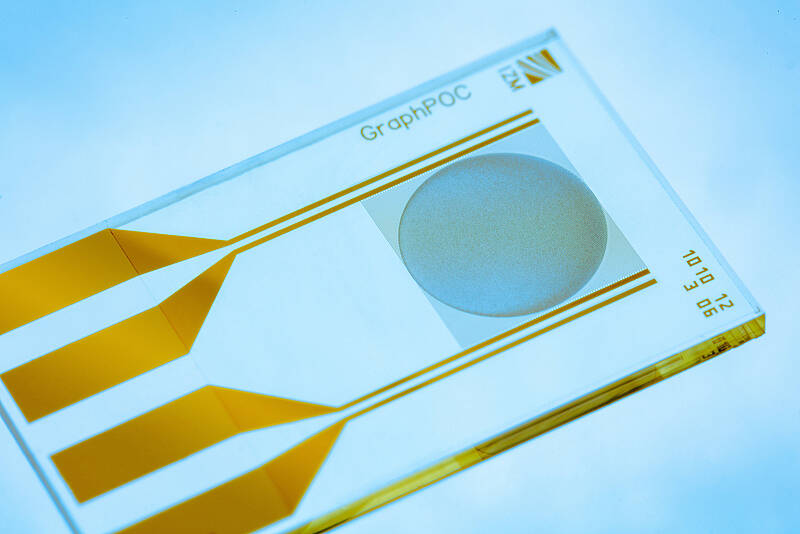
Researchers from the German Fraunhofer Institute, together with the Technical University of Berlin, have developed a quick test that can detect antibodies against the coronavirus within 15 minutes. Biosensors based on graphene oxide can also detect other bacterial and viral infections. In connection with certification, the researchers expect the device to become available in one year’s time.
The current corona pandemic shows how important it is to detect infections quickly and accurately so that further infections can be prevented. Diagnoses of viral or bacterial infections are currently based on symptoms. This can quickly lead to miscalculations, as some infections cause similar symptoms. Although blood tests provide certainty, they are only carried out in laboratories on a doctor’s prescription.
One drop of blood is sufficient for the diagnosis
Since April 2018, researchers from Fraunhofer IZM in Berlin have been working on a sensor platform that can quickly detect infections. Only one drop of blood or saliva is needed to perform an exact analysis. The drop is placed on the sensor surface and within 15 minutes the presence of an infection can be determined. The test can also be set up to detect antibodies, even if the patient has already had an infection. Fraunhofer IZM researchers are currently focusing on this application to be able to detect previous infections with the COVID-19 virus and to identify infection routes.
During an infection, the human body forms so-called biomarkers. The presence of an infection is then determined on the basis of differential measurements of the concentration of these biomarkers.
Biocompatible material in 3D structure
The special feature of the sensor platform is the material used: graphene oxide. This is an electrically conductive and biocompatible material that enables particularly reliable detection. In microelectronics, it has so far only been used in its original 2D form. However, the researchers at Fraunhofer IZM now apply it in a 3D structure in the form of flakes. This three-dimensional shape increases the measuring surface and also the accuracy of the measurements.
Manuel Bäuscher, a scientist at Fraunhofer IZM, sees great potential for graphene oxide sensors. “First and foremost, of course, the corona application has priority. But the principle is also applicable in environmental technology and for detecting environmental influences.”
For example, harmful gases such as carbon monoxide or acetone can be detected even at room temperature. With flow sensors of this kind, the gases must first be heated so that a surface reaction can take place. However, by adhering the metal oxides to the sensitive surface of the graphene sensor, the sensor already reacts at lower temperatures.
Also interesting: Polish company develops diagnostic test for general practitioners
"Hour" - Google News
August 10, 2020 at 02:30PM
https://ift.tt/3kvk23X
Quick test can detect antibodies to coronavirus in quarter of an hour - Innovation Origins
"Hour" - Google News
https://ift.tt/2WcHWWo
https://ift.tt/2Stbv5k
Bagikan Berita Ini















0 Response to "Quick test can detect antibodies to coronavirus in quarter of an hour - Innovation Origins"
Post a Comment